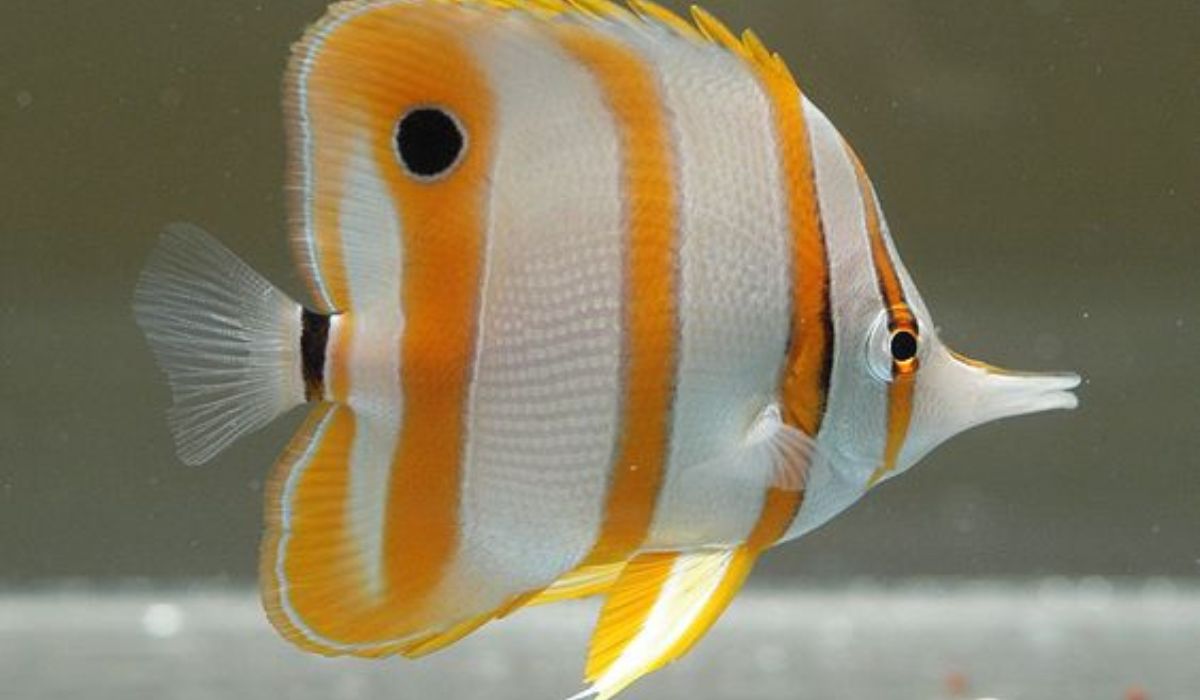Welcome to the enchanting world of butterfly fish, where vibrant colors and intricate patterns come together in a mesmerizing display. These graceful creatures are a delight to behold, with their delicate fins fluttering through coral reefs like living works of art. Join us on a journey to uncover the secrets of these fascinating beings as we dive into their scientific classification, stunning physical characteristics, and even explore how they reproduce and survive in their underwater habitats. So grab your diving gear and prepare to be amazed by the captivating beauty of butterfly fish!
Scientific Classification and Conservation Status
Butterfly fish belong to the family Chaetodontidae, which is part of the order Perciformes. They are known for their vibrant colors and unique patterns, making them a popular choice among aquarium enthusiasts and divers alike. With over 120 recognized species, butterfly fish can be found in tropical and subtropical waters around the world.
In terms of conservation status, many species of butterfly fish are considered to be of least concern. However, some populations have experienced declines due to various factors including habitat destruction, pollution, climate change, and overfishing. It is important to note that certain species may have specific conservation needs or may be more vulnerable than others.
Efforts are being made by scientists, researchers, and environmental organizations to monitor and conserve butterfly fish populations. This includes implementing sustainable fishing practices, establishing marine protected areas, conducting research on their biology and ecology, as well as raising awareness about the importance of preserving these beautiful creatures.
Locations and Distribution of Butterfly Fish
The vibrant world of butterfly fish spans across a wide range of locations, making them a sight to behold for divers and snorkelers around the globe. These enchanting creatures can be found in tropical waters throughout the Indo-Pacific region, from the Red Sea to Australia and even as far east as Hawaii.
One of the most popular spots for encountering butterfly fish is the Great Barrier Reef off the coast of Australia. With its colorful coral reefs and crystal-clear waters, it provides an idyllic habitat for these stunning creatures. The Maldives also offers a paradise-like setting where you can spot various species of butterfly fish gliding through the warm Indian Ocean currents.
Moving towards Southeast Asia, Thailand’s Similan Islands are renowned among diving enthusiasts for their abundant marine life, including several species of butterfly fish. Similarly, Indonesia’s Raja Ampat archipelago boasts some of the highest levels of biodiversity on Earth and is home to numerous types of vibrant butterfly fish.
If you’re planning a trip to Africa, don’t miss out on exploring Egypt’s Ras Mohammed National Park or Tanzania’s Zanzibar Island, both known for their rich underwater ecosystems hosting beautiful specimens like long-nosed and masked butterflyfish.
Whether you’re diving in remote corners or relaxing at popular tourist destinations, keep your eyes peeled for these mesmerizing creatures as they gracefully navigate through their aquatic homes with their distinct colors and patterns truly showcasing nature’s artistic touch.
Physical Characteristics of Butterfly Fish
Butterfly fish are known for their unique and captivating physical features. These graceful creatures have a flat, disk-shaped body that is laterally compressed, giving them a distinctive profile. Their bodies are usually small to medium-sized and can range in length from 4 to 8 inches.
One of the most striking characteristics of butterfly fish is their vibrant colors and intricate patterns. Their scales come in various shades of yellow, orange, white, black, and silver, creating a stunning display of hues. Some species also boast eye-catching stripes or spots on their bodies.
The dorsal fin of butterfly fish is elongated with sharp spines that can be raised or lowered depending on their mood or behavior. This feature helps them navigate through coral reefs with ease while providing protection against potential predators.
Another notable characteristic is the presence of a long snout-like mouth that protrudes from the front of their face. This specialized mouth structure allows butterfly fish to feed on small organisms such as plankton and algae found within coral reefs.
Their eyes are positioned high on their heads, enabling them to have an excellent field-of-view without needing to constantly move their bodies. This gives them an advantage when it comes to spotting both prey and potential threats in their environment.
These physical traits make butterfly fish not only visually appealing but also perfectly adapted for life in coral reef ecosystems. They effortlessly blend into the colorful surroundings while exhibiting gracefulness in every movement they make.
The Stunning Colors and Patterns of Butterfly Fish
The stunning colors and patterns of butterfly fish are a true marvel to behold. These vibrant creatures display an array of hues that can rival the most breathtaking tropical sunsets. From electric blues to fiery oranges, their intricate patterns and bold markings are a testament to nature’s creativity.
One cannot help but be mesmerized by the kaleidoscope of colors on their scales as they gracefully swim through coral reefs. Each species possesses its own unique combination, making every encounter with these beautiful fish a new experience.
Some butterfly fish boast eye-catching vertical stripes, while others flaunt dazzling spots or intricate geometric designs. The variations seem endless, adding to the allure and intrigue surrounding these underwater wonders.
These striking colors and patterns serve several purposes for butterfly fish. They act as camouflage amidst the colorful corals where they reside, helping them blend seamlessly into their surroundings. Additionally, they aid in communication within their social groups and may even serve as warnings to potential predators.
Butterfly fish have truly mastered the art of catching our eyes with their radiant appearance. Whether you’re an avid diver or simply admire marine life from afar, it’s impossible not to appreciate the beauty that these enchanting creatures bring to our oceans.
Interesting Facts About Butterfly Fish
Butterfly fish are not only visually stunning, but they also have some fascinating characteristics that make them truly unique. Here are some interesting facts about these enchanting creatures:
1. Name Origins: The name “butterfly fish” comes from their vibrant colors and intricate patterns, which resemble the delicate wings of a butterfly. These exquisite markings help them blend in with coral reefs and protect themselves from predators.
2. Social Creatures: Butterfly fish are known for their social behavior and often form pairs or small groups within their territories. They communicate through various visual displays and even engage in “kissing” to strengthen their bond.
3. Monogamous Mates: Once a pair of butterfly fish forms a partnership, they remain faithful to each other throughout their lives. This monogamy ensures successful reproduction and protection of their offspring.
4. Unique Feeding Habits: Unlike many other reef-dwelling species, butterfly fish primarily feed on coral polyps rather than algae or plankton. Their specialized mouths allow them to extract tiny organisms from crevices in the coral, making them vital contributors to the health of reef ecosystems.
5. Mimicry Mastery: Some species of butterfly fish have evolved remarkable mimicry skills as a defense mechanism against potential predators. By imitating toxic or venomous counterparts such as sea slugs or flatworms, they deter would-be attackers.
6. Color-Changing Abilities: While most butterfly fish exhibit brilliant colors during adulthood, they can change shades depending on environmental factors like light intensity or stress levels. This camouflaging ability helps them adapt to different conditions and avoid detection by predators.
7.Territorial Defenders: Butterfly fishes fiercely guard their territories against intruders using aggressive behaviors like chasing away rivals or displaying threatening postures towards competitors for space resources on the reefs!
How Butterfly Fish Reproduce and their Lifespan
Butterfly fish have an interesting reproductive process that involves courtship rituals and the laying of eggs. When it comes to reproduction, butterfly fish are known for their monogamous relationships. Once a pair has formed, they engage in elaborate courtship displays, which can include swimming together in synchronized patterns and even changing colors.
Once the female is ready to lay her eggs, she releases them into the water column where they float until they hatch. The male butterfly fish then fertilizes the eggs externally by releasing his sperm over them. After fertilization, it takes several days for the eggs to hatch and become larvae.
The larvae go through a pelagic phase where they drift with ocean currents before eventually settling on coral reefs or other suitable habitats. This period of drifting allows for dispersal and colonization of new areas.
As for their lifespan, butterfly fish generally live between 5 to 7 years in the wild. However, there are some species that have been known to live up to 10 years or more under optimal conditions.
It’s important to note that proper habitat conditions play a crucial role in ensuring successful reproduction and long lifespans for butterfly fish. Healthy coral reefs with abundant food sources are essential for their survival.
Understanding how butterflyfish reproduce and their lifespan provides valuable insights into their life cycle and emphasizes the need for conservation efforts aimed at preserving their habitats. By protecting coral reefs and maintaining sustainable fishing practices, we can help ensure these mesmerizing creatures thrive in our oceans for generations to come!
Predators and Prey of Butterfly Fish
Butterfly fish, with their vibrant colors and intricate patterns, may seem like they have no natural enemies in the underwater world. However, these beautiful creatures do face threats from predators lurking beneath the waves.
One of the main predators of butterfly fish is larger predatory fish such as groupers and snappers. These stealthy hunters use their size and speed to ambush unsuspecting butterflyfish as they swim among coral reefs. They strike swiftly, swallowing their prey whole before moving on to find their next meal.
Another threat comes from predatory cephalopods like octopuses and cuttlefish. With their camouflage abilities and agile tentacles, these intelligent creatures can quickly snatch a butterflyfish from its hiding place among corals or rocks.
Even some species of eels are known to prey on butterflyfish by using their elongated bodies to slip into crevices where the smaller fish seek refuge.
On the flip side, butterfly fish themselves are not immune to preying upon other marine organisms. Their diet primarily consists of small invertebrates such as coral polyps, worms, shrimp larvae, and small crustaceans that inhabit reef ecosystems.
The unique mouth structure of butterflyfish allows them to feed on hard-bodied prey like coral polyps by pecking at them repeatedly until they break apart. This specialized feeding behavior helps maintain a balance within the ecosystem by controlling populations of certain invertebrates.
Fishing and Cooking Butterfly Fish
If you’re a seafood enthusiast, you may be wondering if butterfly fish are suitable for fishing and cooking. While they are indeed caught by fishermen, it’s important to note that these vibrant creatures aren’t typically targeted as a primary catch. Instead, they often end up as bycatch in nets or traps meant for other species.
Due to their small size and delicate nature, butterfly fish can be challenging to prepare in the kitchen. However, their flesh is known for being mild and tender with a sweet flavor that pairs well with various seasonings.
When it comes to cooking butterflyfish, grilling or pan-searing is a popular method. This allows you to retain the natural flavors while adding some delicious charred notes. Alternatively, you can also bake them whole or fillet them before frying.
It’s worth mentioning that butterflyfish bones are quite numerous and fine, so take care when eating them. Some people prefer to remove the bones altogether before serving.
As with any seafood dish, freshness is key when it comes to enjoying the best flavors of butterflyfish. If possible, source your catch from reputable suppliers who prioritize sustainable fishing practices.
So next time you encounter these mesmerizing creatures on your plate or at the market, consider giving them a try! Their unique colors and patterns may just make your dining experience even more visually appealing!
Recommendations for Butterfly Fish Products and Resources
Butterfly fish are not only stunning creatures to observe in their natural habitat, but they also make for captivating additions to home aquariums. If you’re a fan of these mesmerizing fish and want to incorporate them into your own aquatic setup, there are a few recommendations I have for you.
When it comes to buying butterfly fish, always ensure that you’re purchasing from reputable sources. Look for trusted breeders or suppliers who prioritize the health and well-being of the fish. This will help minimize any potential stress during transportation and acclimation.
Consider the specific needs of butterfly fish when setting up their tank. These beautiful creatures thrive in environments with plenty of hiding spots and live rock formations where they can explore and feel secure. Additionally, providing ample swimming space is essential as butterfly fish are active swimmers.
To enhance the beauty of your butterflyfish tank, consider adding some compatible tank mates such as other peaceful reef-dwelling species like gobies or wrasses. However, be cautious about introducing aggressive or territorial species that may harass or harm your delicate butterflyfish.
In terms of food options for your butterflyfish, aim to replicate their natural diet as closely as possible. Provide a variety of high-quality frozen foods such as brine shrimp or mysis shrimp along with flakes specifically formulated for marine herbivores.
Stay informed about current research on best practices related to caring for butterflyfish. Join online forums or engage with local aquarium clubs where experienced hobbyists can provide valuable insights based on their own experiences.
By following these recommendations and staying committed to providing optimal care for your beloved butterflies of the sea, you can create a thriving environment that showcases their vibrant colors and patterns while ensuring their overall health and well-being!
Conclusion
As we conclude our exploration of the mesmerizing beauty of butterflyfish, it is evident that these creatures are truly a sight to behold. With their vibrant colors and intricate patterns, they add a touch of magic to the underwater world.
Through this guide, we have discovered the scientific classification and conservation status of butterflyfish, as well as their distribution across various locations. We have also delved into their physical characteristics and marveled at the stunning array of colors and patterns displayed by different species.
Learning about the interesting facts surrounding butterflyfish has allowed us to appreciate them even more. From their unique reproductive methods to their relatively long lifespan in captivity, there is always something intriguing about these graceful swimmers.
Despite their alluring appearance, butterflyfish face threats from predators in their natural habitat. It is important for us to acknowledge these challenges and work towards protecting them for future generations to admire.
For those interested in experiencing the wonders of butterflyfish firsthand or adding some aquatic charm to your home aquarium, there are several options available. Just remember to source responsibly and ensure proper care for these delicate creatures.
Whether you’re an avid diver or simply fascinated by marine life, exploring the world of butterflyfish opens up a whole new realm of wonderment. Their presence brings joy not only through their vibrant colors but also through understanding how they contribute to the fragile balance of ocean ecosystems.
So next time you find yourself submerged beneath azure waters or gazing into a beautifully maintained aquarium tank, keep an eye out for these enchanting creatures – let yourself be captivated by the mesmerizing beauty that is the butterflyfish!
Also Read: Elephantnose Fish: The Astonishing Abilities of Nature’s Electric Sleuths.











